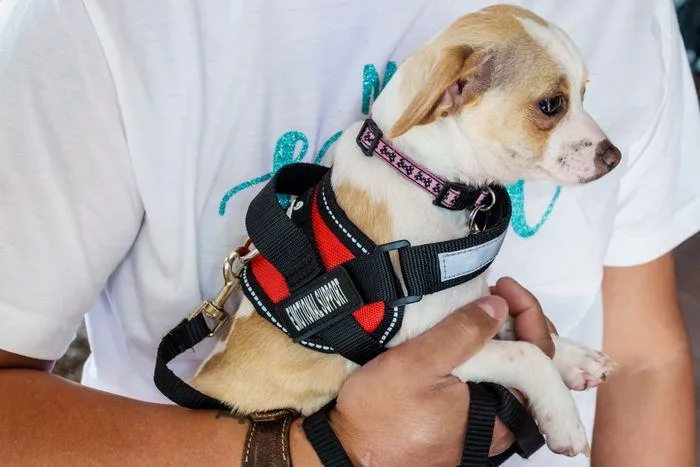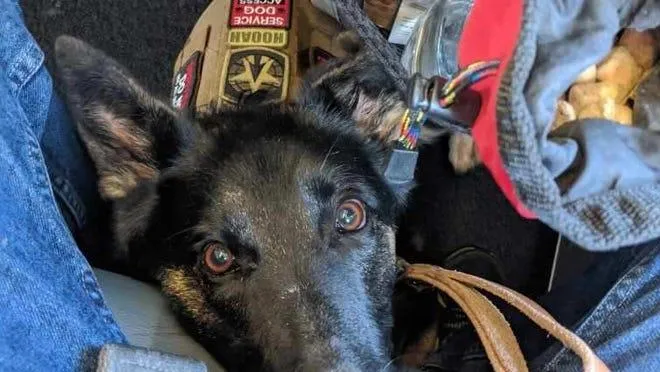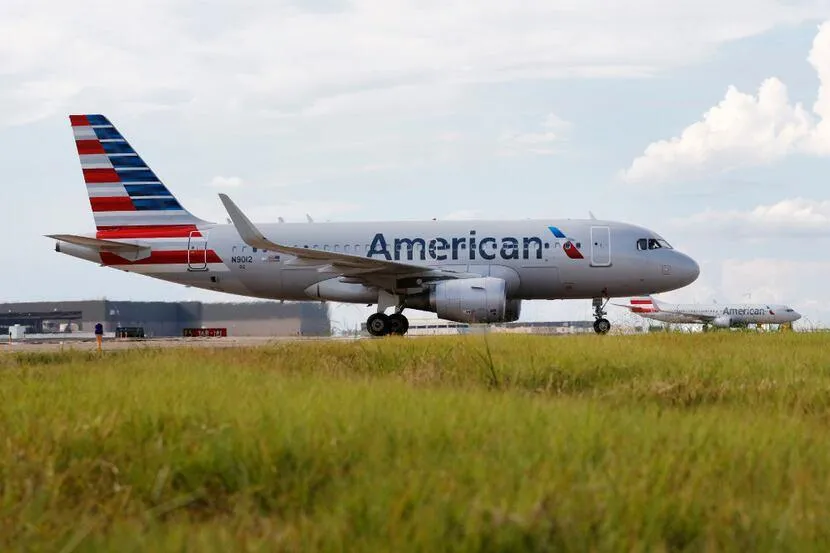A Comprehensive Guide to Emotional Support Animals on Planes
Are you wondering which airlines will let you bring your emotional support dog in the cabin? In this article, I’ll provide a detailed overview of the policies and requirements of major U.S. airlines regarding emotional support animals (ESAs).
What is an Emotional Support Animal?
An emotional support animal (ESA) is an animal that provides therapeutic benefit to its owner through companionship. Under the Fair Housing Act and Air Carrier Access Act, emotional support animals are legally recognized as animals that work, provide assistance, or perform tasks for the benefit of a person with a mental health condition or disability. Unlike service animals, ESAs are not required to be specially trained.
Requirements to Bring an ESA on a Plane
To bring an ESA with you in the cabin of a plane, the animal must be necessary for your mental or emotional well-being. You’ll need a note from a licensed mental health professional stating that you have a disability and need the animal for support. This is often called a “letter of accommodation.” Most airlines require the letter to be less than one year old.
- Provide the letter to the airline at least 48 hours before your flight.
- Make sure your animal is leashed, harnessed, or in a carrier.
- Be prepared to show documentation to airline staff if asked.
Unlike service animals, emotional support animals are not exempt from certain animal restrictions like breed, size, and health requirements. Some common restrictions include weight limits, prohibitions against certain breeds like pit bulls, and requirements for vaccination documentation.
Major U.S. Airline ESA Policies
American Airlines
American Airlines accepts ESAs in the cabin on flights to and within the U.S. The animal must fit in your lap or at your feet. Passengers must provide a letter from a mental health professional dated within the last 12 months.
Delta Air Lines
Delta accepts ESAs in the cabin for domestic flights as well as some international routes. ESAs must remain in a carrier/kennel under the seat for the entire flight. A letter is required and muzzles are prohibited. Delta has weight limits for ESAs based on flight length.

United Airlines
United allows ESAs on domestic flights. Animals must remain on the floor at the passenger’s feet or on their lap for the entire flight. Documentation must come from a licensed mental health professional and be less than one year old.
Southwest Airlines
Southwest accepts ESAs for travel within the U.S. and between the U.S., Mexico, Central America, and the Caribbean. Unlike other airlines, Southwest does not assign seats, so you’ll need to check in early to sit near your ESA if possible. No size or breed restrictions apply.
Common Scenarios Involving ESAs and Air Travel
From my experience as a therapist who has written ESA letters for clients, here are some situations that commonly arise when flying with an ESA:
ESA Misbehaves on Flight
If an ESA causes disturbances like barking excessively or relieving itself in the cabin, the owner may be asked to take alternative transportation without the animal. However, a single incident would likely result in a warning rather than an outright ban.
Traveling Internationally with an ESA
While U.S. law protects ESAs on domestic flights and some international routes, many foreign countries do not recognize ESAs and may require quarantine, vaccination records, or other animal import documents.
Bringing an ESA to a Hotel or Rental Property
While airlines must allow ESAs, landlords are not legally required to accept them under the Fair Housing Act. It’s important to notify properties in advance and get written approval prior to travel if staying somewhere with an ESA.

Alternatives If an Airline Won’t Accept Your ESA
If an airline has weight, size, breed, or other restrictions preventing travel with a specific ESA, here are some potential options:
- Contact the airline well in advance for exceptions and accommodations.
- Consider traveling with just a licensed service animal if the ESA does not meet policy.
- Drive, take a train, or bus instead of flying if no other choice is suitable.
- See if another family member or caretaker can care for the animal temporarily during travel.
Keep in mind, airlines are not required to make exceptions that pose undue hardship. While advocate for your rights, also understand different perspectives that ensure safety for all passengers.
Final Thoughts on ESAs and Air Travel
Flying with an emotional support animal requires planning and following airline policies carefully. With proper documentation, ESAs can provide important therapeutic benefits to those with mental health conditions. At the same time, other passengers’ needs and safety precautions must also be taken into consideration. Overall, respecting guidelines and being considerate of fellow travelers helps ensure positive experiences for all when flying with an ESA.
In summary, I hope this detailed guide has addressed your questions and shed some light on the process of taking an emotional support animal on a commercial airplane. Please let me know if you need any clarification or have additional questions!
Airlines Accepting Emotional Support Dogs
| Airline | Accepts ESAs | Documentation Required | Restrictions |
|---|---|---|---|
| American Airlines | Yes | Letter from mental health professional | Animal must fit in carrier under seat |
| Delta | Yes | Letter less than 1 year old | Animal must remain in carrier at all times |
| United | Yes | Current letter and vaccination records | No more than 2 animals per passenger |
| Southwest | Yes | Letter from licensed mental health professional | Animal must remain in carrier at passenger’s feet |
| Alaska | Yes | ESA registration online | Animal must remain in carrier at all times |
FAQ
-
Do all airlines let you bring emotional support dogs?
Basically, the majority of major airlines in the US will allow you to bring an emotional support dog on the plane with you. However, the rules and regulations kind of differ for each airline. So it’s always a good idea to check the specific policies for the airline you’re flying with.

-
What documentation do I need for an emotional support dog?
You’ll need a letter from a licensed mental health professional, like a psychiatrist or psychologist. The letter needs to be dated within the past year and explain that you have a disability and how the emotional support dog helps you to manage your condition. Some airlines may require additional forms too. It’s a good idea to contact the airline directly to find out their exact requirements.
-
Are there size or breed restrictions for emotional support dogs?
Most airlines don’t have specific size limits, but the dog has to be able to sit comfortably on your feet or in a carrier under the seat in front of you during takeoff, landing, and turbulence. Some breeds may be restricted too for safety reasons. Pretty much, as long as your dog is well behaved and the paperwork is in order, the size and breed are generally okay. But again, check each airline’s rules – they can differ slightly.
-
Do I have to pay extra fees for an emotional support dog?
Surprisingly, many airlines will waive pet fees for legitimate service or emotional support animals. Nevertheless, some carriers may charge a small administration fee to process the documentation. Additionally, you are responsible for any fees related to your animal that are imposed by the airline, such as checking an oversized kennel. So be prepared to pay a fee, but hopefully it won’t be as much as a regular pet.
-
What are the responsibilities for emotional support dogs on planes?
You’re fully responsible for your dog’s behavior and needs throughout the entire trip. That means making sure they don’t disrupt other passengers or crew. You’ll also need to comply with vaccination and health certificate requirements. It’s a good idea to bring your dog’s leash, food, bowls, and cleanup supplies too. The last thing anyone wants is dog hair and accidents on the plane! So go prepared and be considerate of others.
-
Can my emotional support animal be denied boarding?
While airlines are required to accommodate legitimate service/support animals, they can refuse animals that are disruptive or pose a danger – such as if they’re barking, growling, or displaying aggressive behavior. The animal must also be able to remain under your control at all times. If you can’t manage your animal appropriately, the airline has the right to deny boarding for safety reasons. So make sure Fido is well behaved and ready to fly!
-
What are some extra tips for flying with an emotional support dog?
Basically, make sure to check with your airline well in advance about documentation and policies. Also arrive extra early for your flight in case there are any delays in getting your paperwork processed. Consider bringing treats or toys to keep your dog occupied and calm. It’s also a good idea to practice having them settle quietly under the seat in advance. Most importantly though – be respectful of other passengers! With some preparation, it can absolutely be done.

